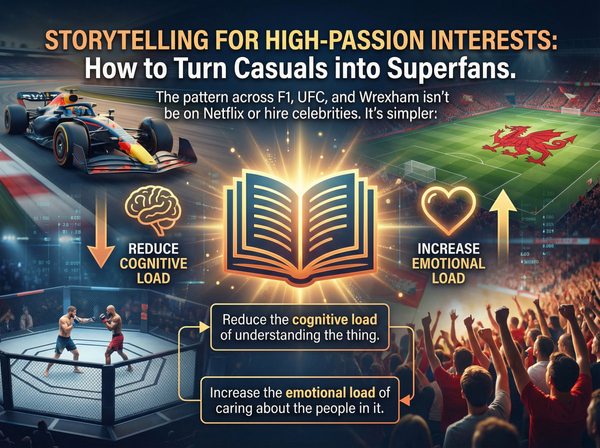FMCG vs. SMCG: Consumer Goods
While FMCG (Fast-Moving Consumer Goods) dominates much of the conversation, understanding the subtle differences between FMCG and what we might call SMCG (Slow-Moving Consumer Goods) can be crucial for sales and marketing professionals.
Both categories are vital to our economy, but they operate on different principles, demand distinct strategies, and cater to varying consumer behaviors.
Fast-Moving Consumer Goods (FMCG): The Everyday Essentials
FMCG products are, as the name suggests, items that are purchased frequently, consumed quickly, and typically have a short shelf life. They are characterized by:
- High sales volume: Think about how often you buy groceries, toiletries, or cleaning supplies.
- Low unit price: Individual items are generally inexpensive.
- High consumer turnover: People buy and repurchase these items regularly.
- Extensive distribution networks: Found in supermarkets, convenience stores, pharmacies, and increasingly, online.
- High competition: A crowded market with many brands vying for consumer attention.
- Reliance on brand loyalty and impulse buys: Consumers often stick to familiar brands, but eye-catching packaging and promotions can drive impulse purchases.
Examples of FMCG include:
- Food and beverages (packaged foods, soft drinks, dairy products)
- Personal care products (soap, shampoo, toothpaste, cosmetics)
- Household cleaning products (detergents, disinfectants)
- Over-the-counter pharmaceuticals
- Tobacco products
Sales and Marketing Implications for FMCG:
- Focus on broad appeal and mass marketing: Reaching a wide audience is key.
- Aggressive pricing and promotional strategies: Discounts, bundles, and loyalty programs are common.
- Strong emphasis on branding and packaging: Differentiation is vital in a crowded market.
- Efficient supply chains and distribution: Ensuring products are always available and are in the relevant stores where the customer shops.
- Leveraging digital marketing for awareness and engagement: Social media, content marketing, and influencer collaborations.
Slow-Moving Consumer Goods (SMCG): The Considered Purchases
While not an official industry term in the same way FMCG is, SMCG is a useful conceptualization to contrast with fast-moving items. SMCG, in this context, refers to products that are purchased less frequently, have a longer lifespan, and often involve a more considered decision-making process from the consumer.
- Lower sales volume (per individual unit): You don't buy a new refrigerator every month.
- Higher unit price: These items represent a more significant investment.
- Lower consumer turnover: Repurchase cycles are much longer.
- More selective distribution channels: Often sold in specialized stores, department stores, or directly from manufacturers.
- Emphasis on features, benefits, and durability: Consumers are looking for quality and longevity.
- Reliance on research, reviews, and trust: The purchase decision is more deliberate.
Examples of what we might consider SMCG include:
- Home appliances (refrigerators, washing machines, televisions)
- Furniture
- Electronics (laptops, smartphones – though some high-turnover electronics blur the lines)
- Automobiles (a prime example of a very slow-moving consumer good)
- High-end fashion items
- Jewelry
Sales and Marketing Implications for SMCG:
- Targeted marketing: Reaching specific demographics who are in the market for these items.
- Focus on value proposition and long-term benefits: Highlighting quality, durability, and ROI.
- Educational content and expert sales assistance: Consumers need information to make informed decisions.
- Building trust and credibility: Reviews, testimonials, and strong customer service are paramount.
- Longer sales cycles: Nurturing leads and building relationships over time.
- Showcasing product features and demonstrations: Allowing consumers to experience the product.
The Blurring Lines and Strategic Crossroads
It's important to note that the lines between FMCG and SMCG aren't always rigid. Some products can exist in a grey area. For instance, while a basic smartphone might be considered SMCG due to its higher price and longer replacement cycle, the rapid evolution of technology and consumer desire for upgrades can make newer models feel faster moving than, say, a washing machine.
Understanding these distinctions is key to crafting effective strategies:
- Resource Allocation: Don't market a SMCG the same way you market a FMCG.
- Customer Journey Mapping: The path to purchase for an FMCG is typically shorter and more impulsive than for an SMCG.
- Sales Team Training: Salespeople for SMCG products need to be more consultative and knowledgeable.
- Marketing Channel Selection: Social media ads might be great for driving awareness for a new snack, while a detailed product review site might be more effective for a new appliance.
By recognizing the inherent characteristics of both fast-moving and slow-moving consumer goods, you can tailor your sales and marketing efforts to resonate more effectively with your target audience, optimize your resources, and ultimately drive greater success.
Keep Crushing!
- Sales Guy


